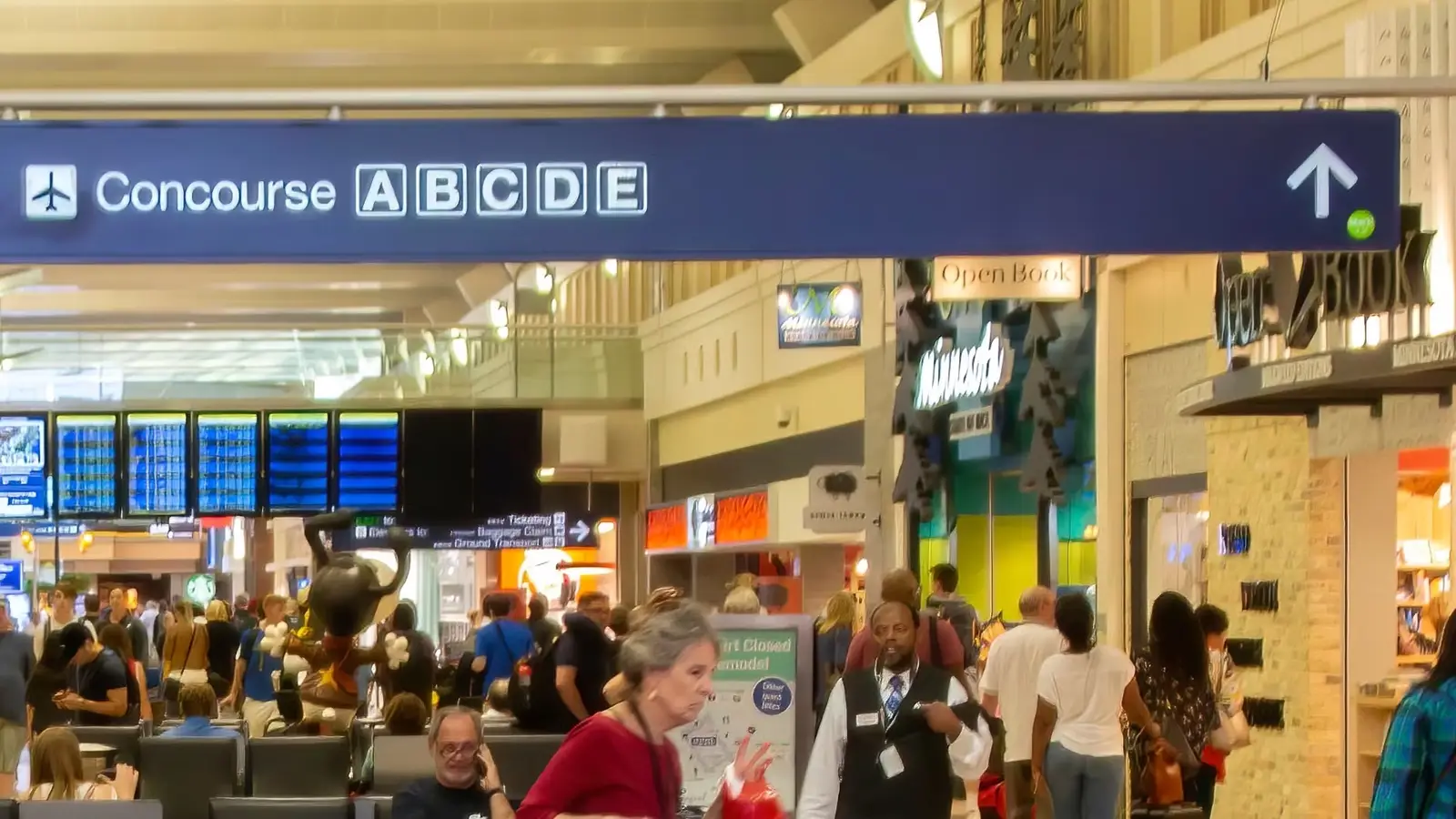
For most travelers, passing through an airport can be a relatively uncomfortable experience. From the crowded, noisy check-in halls to waiting areas packed with travelers standing in line for boarding, there are relatively few places where passengers have the opportunity to rest and relax before getting onboard any particular flight. There are a number of ways that passengers can attempt to improve their passenger experience. Flying is not fun, and few people will try to tell you otherwise. But there are some kinds of moves that frequent flyers will make that significantly improve the nature of their passenger experience.
Every airport, airline, and even individual flight is a unique experience, and how a seasoned traveler approaches the complex decision-making process of entering an airport and proceeding to their gate varies each time. However, there are some patterns that we can observe that help categorize the decisions made by frequent fliers. These moves differ from traveler to traveler, but the need to travel safely and efficiently while also making sure that they enjoy their experience is both difficult and not the easiest thing to do. Let’s take a deeper look at some moves made by frequent fliers that improve the passenger experience.
What Do Frequent Flyers Do Before Arriving At The Airport?
Those who are frequent fliers are known to treat the pre-airport arrival window as an opportunity for mission prep. Travelers begin by choosing flights that offer a good buffer, so that they can arrive earlier, be certain that they will not miss connections, and even select aircraft types that are less prone to delays. They prioritize seats towards the front of the cabin, which makes it easier to board and then subsequently deplane. Passengers can check in 24 hours in advance, and mobile boarding passes will be added to wallet apps, making them easy to access. Frequent travelers will have all accessible paperwork on hand.
Passengers will make sure to have pre-weighed their bags and tagged them distinctively, to make sure that they don’t run into any trouble at check-in. Passengers will also have on hand a personal item that easily fits an airline’s sizing restrictions. Passports, vouchers, itineraries, airline lounge apps, preloaded entertainment, and even maps will also be available to ensure a flight goes smoothly.
Frequent travelers will have real-time alerts enabled in their airline app and also third-party sites like FlightAware, which allow gate changes to and equipment swaps to be identically recognized. Passengers will review backup routings and even airline same-day change rules, so if anything goes amiss, they know exactly their course of action. Ground transportation is carefully coordinated so that passengers can arrive curbside a comfortable 90 to 120 minutes before their flight’s departure.
What Do Frequent Passengers Do Once They Arrive At The Airport
When frequent fliers get to the airport, they have exactly one thing on their mind. They want to get as efficiently as possible from the terminal door to their flight. These kinds of travelers will aim to get dropped off at the correct terminal door for their airline, quickly confirm that their flight is on time, and then head directly to bag-drop (unless they are traveling exclusively with carry-on luggage. There, they will quickly scan their boarding pass, tag their bags, and take a quick photo of the baggage tag number.
Suppose the weather in the area or air traffic control conditions appear unfavorable. In that case, customers will look to proactively ask an airline representative about backup routings or the option of same-day changes before clearing security. Then, they will follow signage to access the most efficient security lane they can enter, with that often being CLEAR or TSA PreCheck.
Enroute to airport security, they will want to eliminate water from any bottles and then take a look at monitors to understand where their nearest gate may be. At the same time, they will proactively monitor security lines in the event that any details about their flight are mentioned over airport loudspeakers.
What Do Frequent Passengers Do At Airport Security?
Passengers who fly frequently will know to choose the fastest security lane that they have access to. CLEAR allows them to skip ID checks, PreCheck will allow them to get through quicker without taking their shoes off or taking laptops out of their bags, or standard security lanes will serve their needs if necessary. Before even reaching the security podium, frequent travelers will have emptied their pockets into bags, removing belts and watches before being asked.
Laptops and tablets will also be efficiently removed from bags, and they will have liquids efficiently contained in the appropriate 3-1-1 bag system. When in line, they will un-nest their bags efficiently to allow each to clear quickly before sitting in the tray unloading area to await their baggage to come through first. Effective separation of electronics before security screening and declaration of hazardous materials (if necessary) helps ensure that no unnecessary delays result at the security checkpoint. These kinds of delays can seriously disrupt a passenger’s journey and potentially lead them to miss their flight. As a result, passengers will be very careful to ensure that luggage rolls off smoothly.
Customers send bins only when they are fully ready to do so, and they are quick to step right up to the passenger scanner before retrieving their items quickly to avoid bottlenecks. If selected for additional screenings, passengers will answer officer questions succinctly and remain calm. The objective is to ensure that few rescans or additional security checks take place, as these tend to slow down the process significantly.
What Do Frequent Travelers Do Post-Security?
Staying locked in throughout an airport experience does not end just when passengers get through the security checkpoint. The first place where passengers may choose to stop is the departure boards, where they can quickly reconfirm an aircraft’s gate, the boarding time, and any operational shifts that may have occurred. Passengers will want to quickly walk to the gate to mark their territory and take a quick look to see if the gate agent is present.
At this time, frequent travelers will want to take a look at the upgrade list while also keeping an eye on power outlets. If time permits, passengers may pivot to a nearby lounge (more on these in a minute). Customer service will also be available somewhere nearby, and a shrewd traveler will want to know where these facilities are located.
It is at this time that they will look to refill water bottles and identify a protein-heavy snack, as well as charging devices that may be needed onboard the aircraft. They will take yet another look at the airline’s app to verify their boarding group and download additional passes for connecting flights, while also having another look at standby rules if delays develop somewhere along the way. Ten minutes before boarding, they will return to the gate, bringing all cables and bags with them.
Where Do Lounges Play Into All Of This?
Airport lounges can help turn dead passenger time waiting around into comfortable and productive relaxation. Those who are fortunate enough to find their way into airport lounges (a trend becoming increasingly common today) will gain access to fast, stable WiFi, abundant power outlets, and quiet seating in a comfortable environment. Business travelers, in particular, enjoy lounge access, as it allows them to catch up on emails, make calls, or review materials in advance of a meeting.
Food and drinks can efficiently replace overpriced airport terminal snacks, making it easier for passengers to remain hydrated prior to long flights. Many lounges will also offer showers, nap rooms, and family spaces, all of which will make it considerably easier for passengers to reset on red-eye flights with tight turnarounds. Furthermore, staffed customer service desks offer more efficient rebooking opportunities that will make it way easier to get help. Agents at these desks will sometimes see inventory earlier.
These facilities are comfortable, and using them can significantly increase the comfort associated with the passenger experience. However, they can be expensive and difficult to access.
What’s The Bottom Line?
At the end of the day, making sure to have a good game plan before getting to the airport will allow you to have the best passenger experience. Those willing to plan will be rewarded as a result.
Some customers will even go further, attempting to hedge against any disruption risks that could arise. Good ways to do this include being very familiar with the airline and its policies.
Traveling can be incredibly stressful. However, carefully planning and executing your personal game plan will help ensure that you have not only a smooth flight experience but can truly enjoy the travel process.



